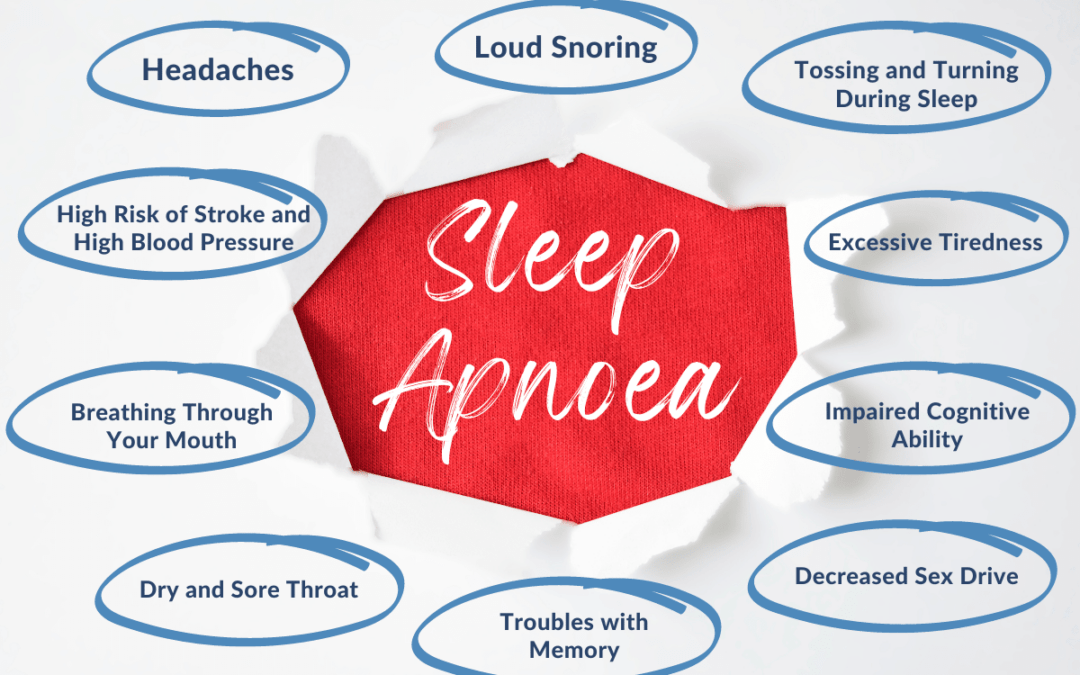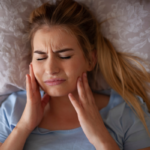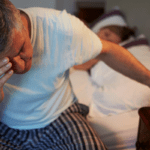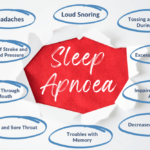Sleep Apnoea is a common disorder where people stop breathing for a time while asleep at night. Men feature highly in the statistics surrounding this condition, with 49% of men aged 40-69 suffering from OSA. Immediate symptoms of Obstructive Sleep Apnoea (OSA) can include irritability and feeling sleepy. Long-term issues can include depression and an increase in heart disease. In this article, we will go into detail about what OSA is and how it can impact your health. We will also go through the ways you can overcome and prevent OSA. SleepWise Clinic recommends tests to determine an early diagnosis. Get in touch with us now to arrange a consultation.
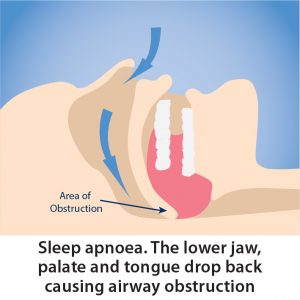
What is Obstructive Sleep Apnoea?
Obstructive Sleep Apnoea is when your throat is partially or completely blocked during sleep, which causes you to stop breathing. It is caused by the relaxation of your tongue or soft palate while sleeping, which then collapses to obstruct your airways.
There are three types of sleep apnoea:
- Obstructive sleep apnoea. It is the most common form of sleep apnoea, where your airways are obstructed while you sleep, causing you to stop breathing for more than 10 seconds at a time.
- Central sleep apnoea. The rarest form of sleep apnoea, which is where signals from the brain to tell your lungs to breathe, fail. This is a fault of your central nervous system, and not an obstruction of your airways.
- Complex sleep apnoea. This form of sleep apnoea is a combination of the first two. It is both a collapse of the airways and the lungs forgetting to breathe.
What Causes Obstructive Sleep Apnoea?
The causes of OSA are the restriction of your airways while you sleep, due to the collapse of your soft palate or your tongue when your muscles relax. It causes you to stop breathing. Generally, your brain picks this up and lightens your sleep and occasionally jolts you awake.
Symptoms of Obstructive Sleep Apnoea
The two biggest symptoms of OSA include loud snoring and feeling some degree of sleepiness. The first symptom is often reported by partners, and the second one is often so common, people don’t often associate it with OSA. This is why if you know of these two symptoms or any of the other symptoms we’re about to list, you should come into a SleepWise clinic to be tested, just to make sure.
Night-time Symptoms
OSA occurs at night time, while you sleep, so many symptoms arise then. These can include:
- Loud snoring. As the airways become restricted, they oscillate and cause loud snoring.
- Tossing and Turning during sleep. Restless sleep can be a result of waking up during the night, being unable to sleep, turning over and going back to sleep, ad nauseam.
- Breathing through your mouth. Your sinuses can get blocked, so you end up breathing through your mouth all night long.
Daytime Symptoms
Having a bad night’s sleep due to OSA can directly affect your daily life. The symptoms you can have during the day include:
- Headaches. You can wake up with a headache from sleep apnoea. if you have recurring headaches like this, you should get checked out.
- Dry and sore throat. This often happens if you sleep with your mouth open.
- Excessive daytime sleepiness. Being tired can impact your cognitive ability during the day. If you need to nap during the day then this is also a sign of all-around sleepiness and can indicate the presence of OSA.
- Troubles with memory, and impaired cognitive ability. Forgetfulness, not remembering important details about work or life. This is an abstract symptom, and one most people wouldn’t normally put down to OSA.
- Decreased sex drive. Another symptom people might not associate with OSA.
These symptoms impact your quality of life. They not only are a health risk physically but can really disrupt your personal life and work life. Such issues can snowball into depression, heart disease and more.
You can read in more detail about OSA symptoms right here.
Risk Factors
There are risk factors that can affect the chances of you having sleep apnoea. They include the following:
- Overweight. While many people with OSA are not overweight a large percentage are. Deposits of fatty tissue around the airways heighten the impact of OSA and can cause increased OSA symptoms, or a longer duration of breathing pauses.
- Gender. Men are three times more likely to have OSA than pre-menopausal women. However, women’s chances of having OSA increase significantly post-menopause.
- Age. The older you get, the higher the chances of OSA. The risk levels, however, seem to level off when you hit your 60s or 70’s.
- High Blood Pressure. If you suffer from hypertension, OSA often causes or aggravates this condition.
- Alcohol and Smoking. OSA is highly likely and aggravated in people who smoke, vape or drink alcohol to excess.
- Asthma. Research has shown there is a high association between asthma and the risk of having OSA
Diagnosing Sleep Apnoea
If any of the symptoms above apply to you, then you need to speak with our team at SleepWise. There are different ways we can help you with an OSA diagnosis.
Arrange a Sleep Study
A sleep study is where we monitor you during your sleep. We measure the quality of your sleep, the oxygen supply during your sleep, and how loud you snore, in decibels! We look at your sleeping position in relation to all of the above, and more.
Read about sleep studies in more detail.
Physical examination
We look at the physical attributes which could be contributing to your sleep apnoea and look at how you can overcome it. We also look at your energy levels and feelings of lethargy and discuss any mood swings or irritability, which are also signs of OSA.
Take a Test to see Sleep Apnoea Test
We also have a free online sleep apnoea test you can take. This will give further indications of whether or not you may have the condition. Of course, we wholeheartedly recommend coming in for actual tests to confirm the findings.
Complications of living with OSA
Having OSA can impact more than just your breathing and sleep. It can have wider implications for your physical and mental health.
Daytime Fatigue
The lack of a good night’s sleep can be draining. Long-term fatigue and sleepiness can hinder your concentration at work, at home, or while driving your car. This can put you at high risk of accidents. Kids who have fatigue from OSA can perform poorly at school and sports.
Complications with surgery and medications.
OSA can be a concern for surgery, especially with anesthesia. Sedatives and narcotic analgesics relax your upper airway, and for people with OSA, it can make that worse as well. You have to let your anesthesiologist know if you have OSA, so they can monitor you while you’re under.
Cardiovascular problems
Drops in the oxygen levels in your blood when not breathing, because of OSA, puts strain on your cardiovascular system. Many people with OSA develop hypertension, which increases their risk of heart disease.
Relationship problems
If your snoring interferes with the sleep of your partner, then they will not be getting a good night’s sleep. This will lead to irritability and conflict within the relationship.
Read more about the health issues surrounding OSA here.
How to treat Obstructive Sleep Apnoea
While there are many negatives to having OSA, it is very treatable. There are simple tricks like sleeping on your side, through to custom-made mouthguards, CPAP machines, or as a last resort- surgery.
Sleeping on Your Side
It is while you’re sleeping on your back that gravity causes the relaxed muscles to obstruct your airways. For many people sleeping on your side, you lessen the impact of the obstruction. You may still snore and have a night of restless sleep, but it will not be as severe as if you were sleeping on your back. An old trick you can use is to attach a tennis ball to the middle of your back. This will prevent you from sleeping on your back and force you to sleep on your side. However there are now small, electronic instruments that can easily help you sleep on your side.
Nasal Sprays
Nasal sprays open up the airways and help you breathe. Obstructed airways can be a cause of OSA, so a quick spray before sleep can assist with a good night’s sleep.
Losing Weight
For many people weight is a significant contributor to the cause and symptoms of OSA. Fatty deposits around the throat and airways can increase the pressure on the airways, and hence increase your chances of severe OSA. Losing weight can help lessen the OSA symptoms, as well as improve your overall health.
Oral Appliances
One of the most common and effective treatments for OSA is oral appliances. SleepWise has a range of OSA oral appliances you can be fitted for. These appliances gently position your jaw so that any obstruction is overcome and you can breathe easily and normally during sleep. They need to be individually fitted to you, so book an appointment with us to get started. We can have these oral appliances 3D printed to fit you perfectly.
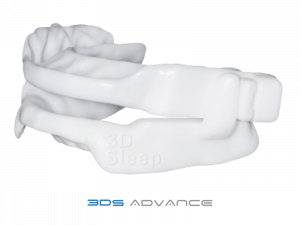
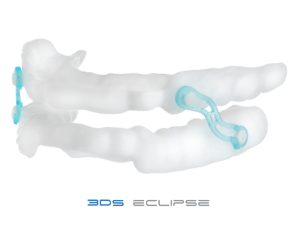
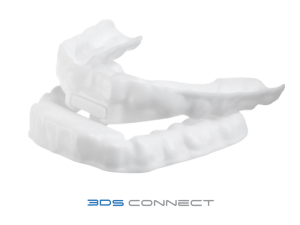
CPAP Machines
Continuous Positive Airway Pressure machines are another common treatment for severe OSA. A mask and nosepiece are fitted over your nose and mouth, and a constant steady air pressure is delivered to help you breathe while you are asleep. The constant air pressure helps to avoid the collapse of your airways due to muscle relaxation. Much like with oral appliances, you need to ensure the mask is fitted to your face. If you have a leaky mask, then the CPAP will not be as effective. This could result in symptoms of OSA continuing, and you not having a good night’s sleep.
Take your time to test and get used to a CPAP machine. Some people may have difficulty sleeping with the constant pressure of air, or not feel comfortable sleeping with a mask. While CPAP can be difficult to use for many people, the good news is that oral appliances have been proven, in many scientific studies, to be just as effective for the majority of patients.
BiPAP Machines
A BiPap machine helps to push air into your lungs through a face mask or nasal plugs. It is called positive pressure ventilation. The difference between a BiPap and a CPAP machine is a BiPap provides more pressure when you breathe in, and less when you breathe out, while a CPAP provides constant air pressure. It is easier to breathe out while using a BiPap.
Medication
Medications are very rarely prescribed to treat sleep apnoea. Sometimes doctors may prescribe medications to prevent daytime sleepiness. However, you must be careful with such things. Reliance on medications to regulate drowsiness does not treat the root cause. Prescribed nasal sprays or antihistamines can help open the airways while you sleep. Please speak to your GP about any medications for sleep apnoea before using them.
Surgery
Surgery for OSA is considered the last resort treatment. It involves removing excess tissue in the throat to permanently widen the airway. A surgeon can remove your tonsils, or adenoids, or trim down your soft palate and uvula as well.
Think you have Sleep Apnoea? Get tested Today
Has any of the information you’ve read here today struck a nerve with you? Has your partner told you that you snore? Have you been feeling sleepy during the day, even if you get 7- 8 hours of sleep per night? We recommend getting yourself tested, if just for your own peace of mind. You can take an online screening test for OSA. If you want more detail, then book an appointment online with our friendly team. We have locations in both Melbourne and Geelong. Obstructive Sleep Apnoea can be debilitating and lead to ongoing health issues. Find out if you have it, and start to lead a healthier life with a better night’s sleep.
References
Lee, D.K. (2022) 3 types of sleep apnoea – symptoms & treatment – sleepwise, SleepWise Clinic. Available at: https://sleepwise.com.au/3-types-of-sleep-apnea-symptoms-treatment/ (Accessed: November 3, 2022).
Senaratna, C.V. et al. (2016) Sleep apnoea in Australian men: Disease burden, co-morbidities, and correlates from the Australian longitudinal study on Male Health, BMC public health. BioMed Central. Available at: https://www.ncbi.nlm.nih.gov/pmc/articles/PMC5103243/ (Accessed: November 3, 2022).
Mayo Clinic (2018). Obstructive Sleep Apnea – Symptoms and Causes. [online] Mayo Clinic. Available at: https://www.mayoclinic.org/diseases-conditions/obstructive-sleep-apnea/symptoms-causes/syc-20352090.
Memon, J. and Manganaro, S.N. (2021). Obstructive Sleep-disordered Breathing. [online] PubMed. Available at: https://www.ncbi.nlm.nih.gov/books/NBK441909/.
Australia, H. (2022). Obstructive sleep apnoea. [online] www.healthdirect.gov.au. Available at: https://www.healthdirect.gov.au/obstructive-sleep-apnoea.

